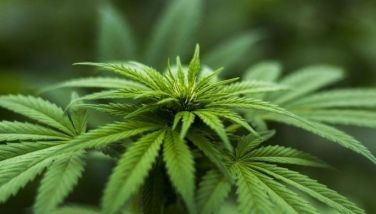Coco producers push coco coir as erosion control tool
MANILA, Philippines - Coconut coir producers are partnering with the Mines and Geosciences Bureau (MGB) on the use of coconut fiber as erosion control tool in compliance with the Mining Act.
The move is in line with efforts to boost domestic sales which currently stand at close to P200 million.
According to the National Coco Coir Industry Technical Working Group, the coconut coir industry has a potential to grow to P1.7 billion.
This partnership followed the signing of a memorandum of agreement with the Department of Public Works and Highways and National Irrigation Administration on the use of geonets for infrastructure development.
“Our coir technical working group composed of representatives from the Department of Trade and Industry and Department of Agriculture will meet with the mining sector on memorandum circular 25,” said Luz Brenda P. Balibrea, trade information and relations chief of the Philippine Coconut Authority.
Sec. 60 of the Philippine Mining Act mandates the use by mining companies of “indigenous goods, services and technologies” in their mining operations.
“A contractor shall give preference to the use of local goods, services and scientific and technical resources in the mining operations, where the same or are of equivalent quality and are available on equivalent terms as their imported counterparts”, the law said.
The coconut coir industry registered P176 million in sales in 2014. It has consistently grown from P42.5 million in 2011, P104 million in 2012, and P131.97 million in 2013.
It employs more than 5,000 people in 64 commercial-based processing facilities and 285 micro small and medium enterprises assisted by the government.
NCCI cluster coordinator Marcelina Alcantara reported earlier that areas planted or replanted to coconut for the coir industry reached 21,195 hectares in 2014. Farmers assisted by the TWG totaled 71,388 as of 2013 while road projects that made use of bioengineering solution hit 7.204 million square meters.
Despite the global requirements for environmental protection, exports of coconut coir remained minimal at $6.9 million as of 2014. Destinations are China, the US and other Asian countries.
The TWG’s goal is to raise export to $50 million, Alcantara said.
Under Sec. 57 of the Mining Act, “a contractor (in mining) shall assist in the development of its mining community, the promotion of general welfare of its inhabitants, and the development of science and mining technology.”
Mining contractors are also required to have “environmental programs that shall be incorporated in the work program relative to mining operations and rehabilitation, regeneration, revegetation and reforestation of mineralized areas, aquaculture, watershed development and water conservation.
Some mining companies such as Taganito Mining Corp. and Nickel Asia Corp. have already adopted use of coconut coir in protecting the environment such as for slope stabilization in mine tailings pond.
Greenstone, an Atlas Mining operation in Cebu, a mine in Masbate run by Filminera and PGMP are also among other users.
NIA has also employed the use of geonets as a bioengineering technology in slope stabilization in irrigation canals, Balibrea said.
“With the order of closure of mines by DENR Secretary (Gina) Lopez, there should be rehabilitation of mines, and it should be with the use of indigenous materials like coconut fiber. That will be an expansion for new markets for coconut producers,” she said.
MC 25, signed in 2002 by then president Gloria Macapagal Arroyo, directs all national and local government agencies to use coco peat and coir fiber for soil conditioning and erosion control. Consequently, MGB may find it useful to push its use among mining companies, Balibrea said.
Geotextile is an effective material in the rehabilitation of streambanks, and even in preventing or minimizing siltation in rivers and water bodies. According to the Bureau of Fisheries and Aquatic Resources, geotextile can be used in protecting mangrove areas.
PCA expects the mining sector’s use of geotextile to boost consumption of coconut products and create more jobs for poor Filipino coconut farmers in the countryside.
Regions 5 (Bicol) and 10 (Northern Mindanao-Cagayan de Oro) are the biggest producers of coconut coir.
Specific products are coco nets and twines, stitched mats (bed mattresses, car seats, plant liners, planting materials), tufted mats, coir ropes and cordage, organic fertilizer with peat as raw material, and peat blocks.
- Latest





























